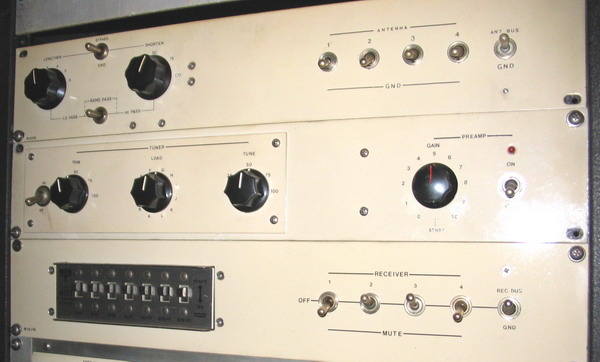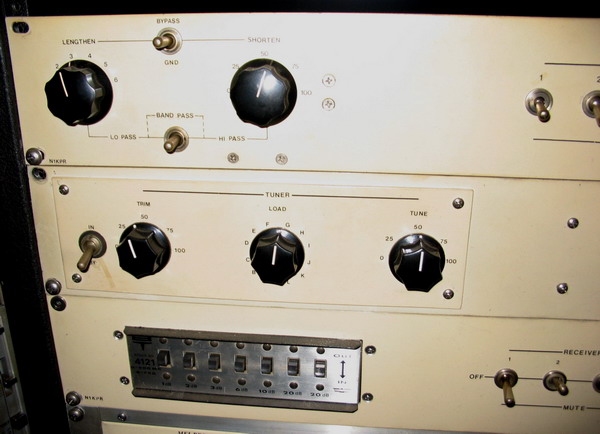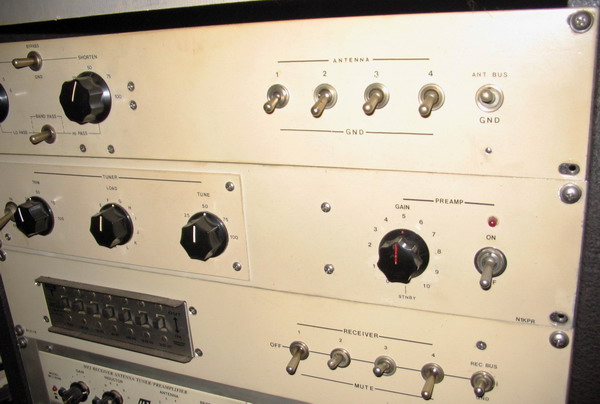The circuits of the tuner and preselector have changed over the past few years as I've learned more about "raw RF signal processing" through trial and error ... and actual usage.
You can blow up the images by right-clicking the photo, select <save image as> and view it in your own picture viewer or browser.
The panels are 1/8" aluminum, primed and painted with beige lacquer. Then the rub-on letters were applied (get them at the art store), and finally, several (very light) coats of clear top-coat were applied for protection.
No, there's nothing wrong with your monitor screen. The panels are quite dirty (okay, I appologize for that) from all the on-going work I've been doing, but water and soap will fix that.
The second pic is a close up of the left side ... likewise the third pic ... is the right side.
On the previous page, page 2, is a photo of the tabletop preselector. It is just a simplified version of the rack mount version shown here.
NOTES:
The preamp is just a low noise device which has variously been a MMIC or JFET transistor. The actual device is a matter of choice, but I opted for something that would be low noise and provide about 15-20 dB of gain (check out Ramsey Kits for their very inexpensive broadband preamp). The gain control is active with, or without, the amplifier in-circuit. This arrangement allows it to act as an RF Gain control when the preamp is off.



